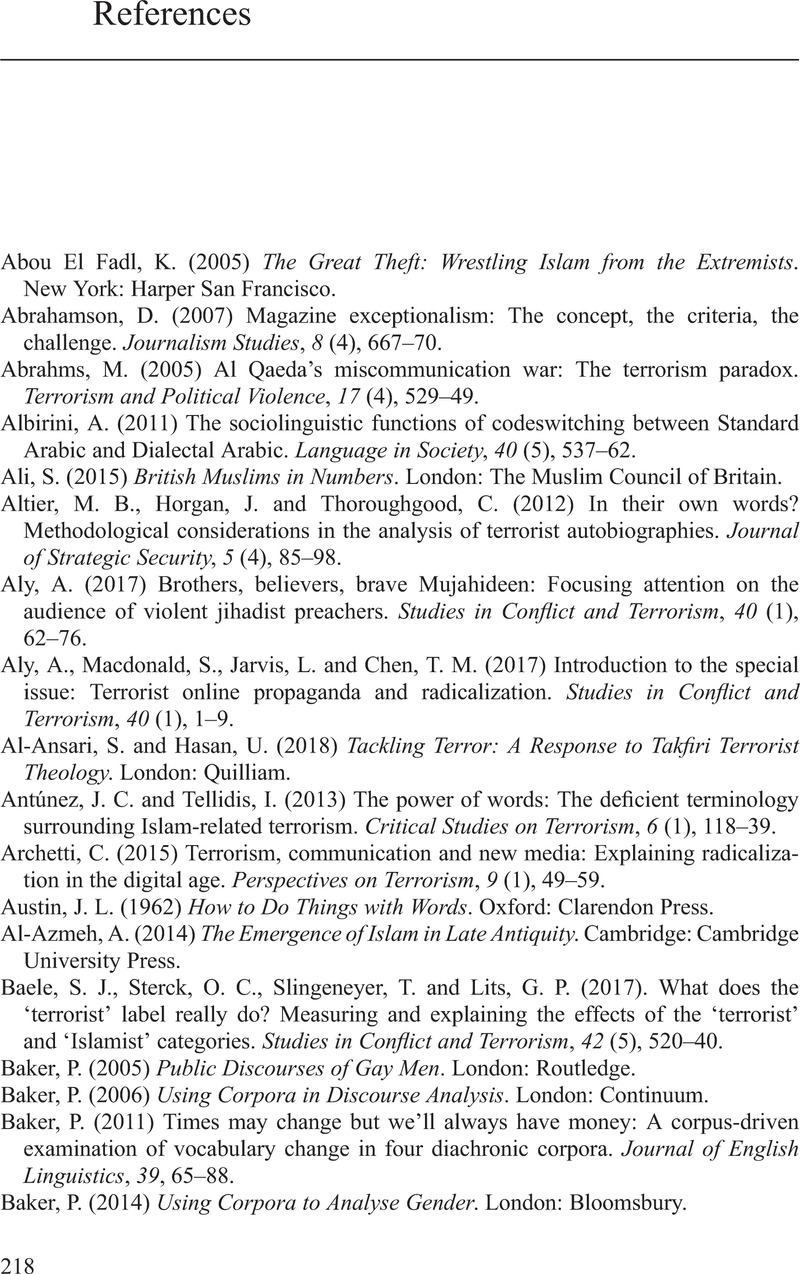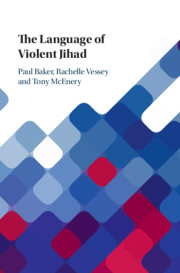Book contents
- The Language of Violent Jihad
- The Language of Violent Jihad
- Copyright page
- Contents
- Figures
- Tables
- Acknowledgements
- 1 Introduction
- 2 Terrorism and Language
- 3 Collecting and Analysing Extremist Texts
- 4 The In-group
- 5 The Out-group
- 6 The Path of Jihad
- 7 Linguistic Strategies
- 8 Conclusion
- References
- Index
- References
References
Published online by Cambridge University Press: 21 October 2021
- The Language of Violent Jihad
- The Language of Violent Jihad
- Copyright page
- Contents
- Figures
- Tables
- Acknowledgements
- 1 Introduction
- 2 Terrorism and Language
- 3 Collecting and Analysing Extremist Texts
- 4 The In-group
- 5 The Out-group
- 6 The Path of Jihad
- 7 Linguistic Strategies
- 8 Conclusion
- References
- Index
- References
Summary

- Type
- Chapter
- Information
- The Language of Violent Jihad , pp. 218 - 228Publisher: Cambridge University PressPrint publication year: 2021



